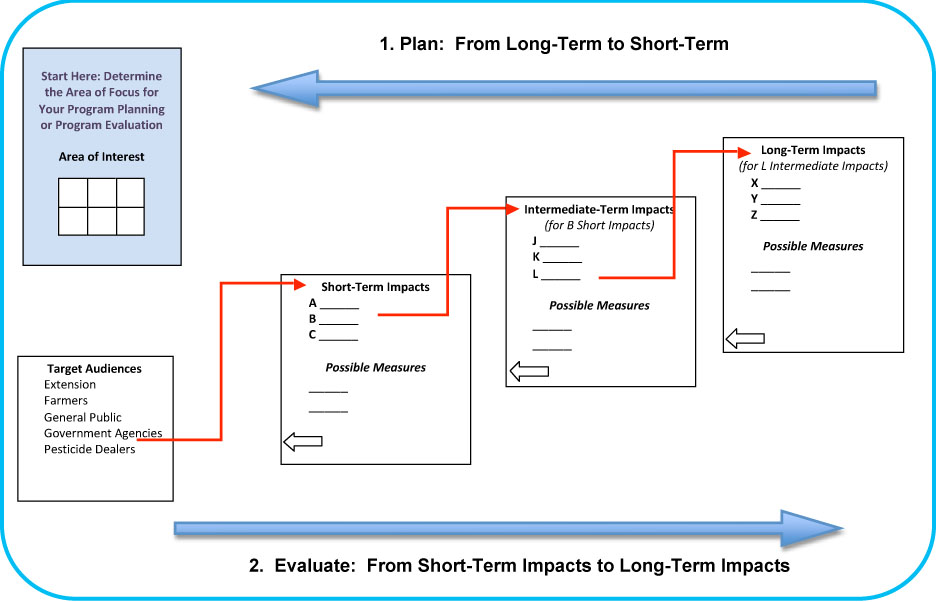The Close Relationship Between Planning and Evaluation
IPM programs are developed to make changes in pest management that minimize the effects of current practices. The desire is to reverse damage that past practices may have caused, reduce the impact of future pest management practices, or make pest management more cost effective. But where profit is not the intended result of a program, it may be difficult to monitor progress toward outcomes, also called impacts.
To know whether a program is successful, it is important to carefully specify the desired impacts and consider how to monitor them over time. In IPM, many desired outcomes are long term, and success is far in the future. In these cases, intermediate- or shorter-Term outcomes may provide an indication of progress toward the ultimate long-term outcome.
One of the most important uses of the technique described on this site is program planning. It helps users to plan with the end goal in mind, rather than just considering inputs (e.g., money or people) or the activities that must be carried out. By focusing on the desired ultimate outcomes or results, planners can then think backwards through intermediate goals to identify how best to achieve the overall desired outcomes or results.
There is a close relationship between planning and evaluation. They are merely two different perspectives on the same project or program. Planning has an eye on the future, and evaluation is a look at the past. Effective planning must keep evaluation in mind, while effective evaluation is rooted in good planning. To plan a program in a way that allows you eventually to measure its effectiveness in achieving the desired long-term impacts, you need to determine and document the existing status or situation and then plan how to measure progress toward the desired outcomes. If you don't anticipate up front what you will need to measure along the way, you may find that you've missed the opportunity to collect the data you eventually will need to evaluate the project successfully.
In the figure below, the components and steps required are outlined. This site describes these steps for 14 examples that cover all of the possible combinations of focus area and impact area described in the USDA's IPM Roadmap Matrix.

